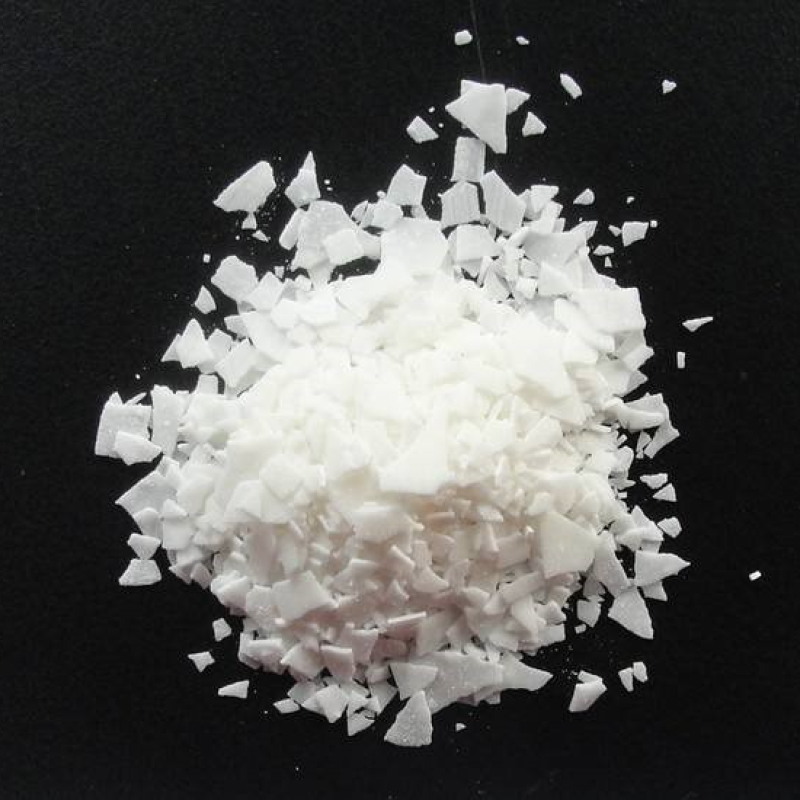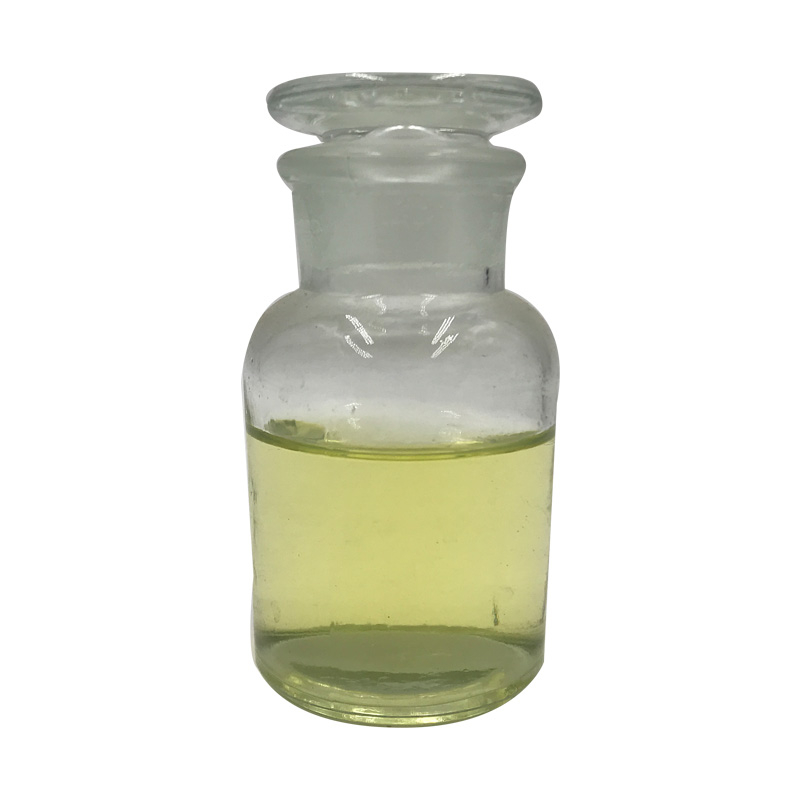Products Description of AMBERLITE(R) IRA-400 (CL) CAS#9002-24-8717 Strong Base Anion Exchange Resin is a chemical substance.AMBERLITE(R) IRA-400 (CL) Chemical PropertiesWater Solubility Insoluble in water.Merck 14,382Safety InformationRisk Statements 36/37/38Safety Statements 26-36WGK Germany 3TSCA YesProduct Application of AMBERLITE(R) IRA-400 (CL) CAS#9002-24-8Used for softening water, preparing high-purity water, refining radioactive elements, extracting iodine from seaweed, refining antibiotics, industrial wastewater treatment, etc.Factory and Equipm
Contact Now
Products Description of ORALITH BRILLIANT PINK R CAS#2379-74-0Reduction of pink red R to thioindigo dyes is mainly achieved by oxidizing unsubstituted or substituted benzo[b]thiophene-3 or naphtho[2,3-b]thiophene using various oxidants such as bromine in a chlorosulfonic acid medium, polysulfides, oxygen in the presence of copper salts, etc.ORALITH BRILLIANT PINK R Chemical PropertiesBoiling point 529.1±50.0 °C(Predicted)density 1.583±0.06 g/cm3(Predicted)storage temp. Sealed in dry,Room Temperatureform SolidColour Index 73360color RedLogP2.06 at 22℃ and pH7E
Contact Now
Products Description of CREMOPHOR (R) A25 CAS#68439-49-6CETETH25 is a nonionic emulsifier obtained by adding natural saturated fatty alcohol and ethylene oxide. CETETH25 (HLB15-17) is an oil-in-water (O/W) emulsifier. When used together with CETETH6, it forms a pair of complementary emulsifiers. The emulsifier pair has a small amount of use and a strong emulsification ability. The prepared emulsion products have high stability and bright appearance. It can tolerate a certain degree of inorganic salts and extreme pH conditions.
Contact Now
Products Description of AMBERLITE(R) XAD-4 CAS#37380-42-0Ion exchange resin is a kind of functional polymer that can exchange with ions of the same sign in aqueous solution. It is essentially a cross-linked polymer acid or polymer base. Phenolic cation exchange resin was first introduced in 1935, and industrial production began in Germany in 1939 and the United States in 1941. After World War II, polystyrene and polyacrylic acid ion exchange resins were put into production one after another. After the 1960s, macroporous ion exchange resins were developed.
Contact Now
Products Description of (R)-(-)-3-Carbamoymethyl-5-methylhexanoic acid CAS#181289-33-8(R)-(-)-3-(Carbamoylmethyl)-5-methylhexanoic acid is solid at room temperature and pressure, soluble in dimethyl sulfoxide, N,N-dimethylformamide and other organic solvents; it has poor solubility in ether solvents and can be used as an intermediate in chiral organic synthesis.
Contact Now
Products Description of (R)-(-)-2-Methylpiperazine CAS#75336-86-6 White to light yellow crystalline solid.
Contact Now
Products Description of (-)-(R)-Mandelic Acid CAS#611-71-2D-mandelic acid is a polar molecule. Because it contains hydroxyl and carboxyl groups, the molecule has a certain degree of hydrophilicity. Since D-mandelic acid is a chiral molecule, its physical and chemical properties are affected by the stereostructure of its molecule. In addition, the acid-base properties of D-mandelic acid are also affected by the molecular structure.
Contact Now
Silicone oil CAS#63148-62-9Silicone oil having a silica structure and is liquid at room temperature and is called as siloxane, referred as silicone oils. The simplest polydimethylsiloxane is as formula [1]. In [2], if the R, R1, R2 are all methyl groups, it is called α, ω-trimethylsilyloxy polydimethylsiloxane, that’s the commonly called silicone oil. It is a linear polymer of a low molecular weight. If R1 and R2 are not a methyl group, then it is not related to this article. Silicone oil is a colorless or light yellow transparent liquid and is odorless and tasteless.
Contact Now
Products Description of Dimethyl terephthalate CAS#120-61-6Dimethyl terephthalate (DMT) is a key precursor in the production of polyethylene terephthalate (PET), widely recognized for its applications in the manufacturing of plastic bottles, fibers, and films. In academic and industrial R&D, DMT is the subject of innovative research, such as its hydrogenation to dimethyl cyclohexanedicarboxylates (DMCD) using bimetallic catalysts, which has demonstrated an 80% conversion rate and 95% selectivity under optimized conditions 43.
Contact Now
Products Description of Diethylene glycol CAS#111-46-6Diethylene glycol (DEG) is a multifaceted compound with a pivotal role in pharmaceuticals, cosmetics, and textiles. Our firm boasts a robust track record of international collaboration, supplying DEG for applications from liquid medications to skincare formulations and advanced textile dyeing processes. Our R&D arm, in synergy with academic excellence, propels innovation, ensuring our DEG consistently exceeds purity benchmarks, typically at ≥99.9%.
Contact Now
Paraffin, Liquid CAS#8012-95-1Mineral oil mist is a colorless, oily liquid aero-sol dispersed in air with an odor like burned lubricating oil.The odor threshold is 1.0 ppm. Specific gravity (H2O:1)=0.865 at 60℃; Boiling point = 250- 360*C; Vaporpressure = <0.5 mmHg at 20℃; Flash point= 193℃;Autoignition temperature = 260- 371℃. HazardIdentification (based on NFPA-704 M Rating System):Health 0, Flammability 1, Reactivity 0. Insoluble in water.Product Name:Paraffin, liquidSynonyms:PARAFFIN VISCID, EXTRA PURE, DAB, PH. EU R., B. P., PH.
Contact Now
Products Description of OP 935 CAS#225789-38-8 As a new type of phosphorus-based flame retardant, diethylaluminum hypophosphite has high thermal stability, chemical stability and environmental friendliness, and can be used as an excellent polymer material flame retardant to replace environmentally harmful halogen flame retardants.OP 935 Chemical PropertieWater Solubility 1.6g/L at 25℃CAS DataBase Reference225789-38-8Product Application of OP 935 CAS#225789-38-8 The main chemical bonds in the structure of diethyl aluminum hypophosphite are P-C, P=O, P-O, and its flame r
Contact Now
Products Description of Sodium hydrogen ferric DTPA CAS#12389-75-2White powder.Sodium hydrogen ferric DTPA Chemical Propertiesdensity 1.607[at 20℃]Water Solubility 113g/L at 30℃LogP-11.9EPA Substance Registry SystemFerrate(2-), [rel-[N(R)]-N-[2-[bis[(carboxy-.kappa.O)methyl]amino-.kappa.N]ethyl]-N-[2-[(S)-[(carboxy-.kappa.O)methyl](carboxymethyl)amino-.kappa.N]ethyl]glycinato(5-)-.kappa.N,.kappa.O]-, sodium hydrogen (1:1:1), (PB-7-13-12564)- (12389-75-2) Factory and Equipment ShowFast delivery timeInventory 2-3 working days New production 7-10 working days
Contact Now
MIBK CAS#108-10-1Chemical Properties:Dichloroethane is a colorless and transparent oily liquid with a chloroform-like odor and a sweet taste. It is very easy soluble in water, miscible with ethanol, chloroform and ether,it also can dissolve oil and grease, grease, paraffin. It is mainly used as a solvent.Application:Dichloroethane can be used as a standard reagent for chromatography; it is also used as a solvent for resins, rubber, cellulose acetate, cellulose esters, paints and polymers such as polystyrene; it is also used as a raw material for organic synthesis.
Contact Now
l-Glutamic acid, N-coco acyl derivs., disodium salts Chemical Propertiesdensity 1.318[at 20℃]vapor pressure 0Pa at 20℃pka1.52[at 20 ℃]Water Solubility 450g/L at 20℃LogP-4.48 at 20℃EPA Substance Registry SystemL-Glutamic acid, N-coco acyl derivs., disodium salts (68187-30-4)Factory and Equipment ShowFast delivery timeInventory 2-3 working days New production 7-10 working days
Contact Now
Products Description of Aminobutyric Acid CAS#56-12-2It is used in biochemical research and medicinally to treat various diseases caused by hepatic coma and cerebrovascular disorders. Pharmaceutical intermediates. 4-Aminobutyric acid has the effect of lowering blood lipids and is suitable for the treatment and prevention of various types of hepatic coma. It can treat poliomyelitis, cerebral hemorrhage, and can be used as an antidote for gas poisoning. Also used in biochemical research and organic synthesis. It can reduce blood ammonia and promote brain metabolism.
Contact Now
Methyl Acetate CAS#79-20-9Methyl acetate, additionally viewed as MeOAc , acetic acid methyl ester or methyl ethanoate, is a carboxylate ester with the formula CH3COOCH3. It is a flammable liquid with a generally high-quality smell reminiscent of some glues and nail polish removers.
Contact Now
Products Description of Mix Xylene CAS#1330-20-7Xylene (dimethylbenzene) is a colorless, transparent, aromatic liquid. It is the product of two hydrogen atoms on the benzene ring being replaced by methyl atoms. It has a boiling point of 137-140°C. Xylene is divided into three isomers: o-xylene, m-xylene, and p-xylene according to the positions of the two methyl atoms. In industry, xylene refers to a mixture of the above isomers and ethylbenzene.
Contact Now
Products Description of Isopropylamine CAS#75-31-0Isopropylamine is also known as 2-aminopropane. It is a colorless liquid with an ammonia smell. Its molecular weight is 59.11. Its boiling point is 33-34℃. Its relative density is 0.694 (15/4℃). Its refractive index is 1.3770 (15℃). Its flash point is -37℃. It is miscible with water, ethanol and ether. It is used as a raw material for pesticides, medicines, dyes, rubber vulcanization accelerators, emulsifiers, detergents and water treatment agents.
Contact Now
Products Description of Color Developing Agent CD-3 CAS#24567-76-8White powder crystalColor Developing Agent CD-3 Chemical PropertiesWater Solubility Soluble in waterform powder to crystalcolor White to Light yellow to Light orangeInChIInChI=1S/2C12H21N3O2S.3H2O4S/c2*1-4-15(8-7-14-18(3,16)17)11-5-6-12(13)10(2)9-11;3*1-5(2,3)4/h2*5-6,9,14H,4,7-8,13H2,1-3H3;3*(H2,1,2,3,4)InChIKeyNPDFXFLCEDDWEG-UHFFFAOYSA-NSMILESC1(=CC=C(N)C(C)=C1)N(CC)CCNS(=O)(=O)C.C1(=CC=C(N)C(C)=C1)N(CC)CCNS(=O)(=O)C.S(=O)(=O)(O)O.S(=O)(=O)(O)O.S(=O)(=O)(O)OSafety InformationHazard Codes Xn;N,N,XnRisk
Contact Now
Products Description of 1,2-Diformyloxyethane CAS#629-15-2Ethylene glycol diformate is a toxic substance that is liquid at room temperature and has a special odor.
Contact Now
Products Description of Ethylene glycol monoethyl ether acetate CAS#111-15-9Colorless liquid. Freezing point -61.7℃, boiling point 156.3℃, 51℃ (2.8kPa), relative density 0.973 (20℃), melting point -61.7℃, refractive index 1.4055 (20℃), flash point 51℃ (closed cup), 66℃ (open cup), ignition point 379℃. Miscible with general organic solvents and soluble in water.
Contact Now
Products Description of Cyanamide CAS#420-04-2Pure cyanamide is a transparent liquid, m.p.-115℃, b.p.-8.5℃, soluble in alcohols, phenols, amines, ethers, easily soluble in benzene and halogenated hydrocarbons, and 77.5% soluble in water at 15℃. High concentration cyanamide is very unstable and easy to polymerize, so stabilizers are often added.
Contact Now
Products Description of 3-Dimethylaminopropylamine 99.5% CAS#109-55-7Colorless and transparent liquid, soluble in water and organic solvents. Relative density 0.8100. Boiling point 133℃. Freezing point - 70°C. Below this temperature it solidifies into glass. Flash point (closed cup) 15℃. Refractive index 1. 4350.
Contact Now


































